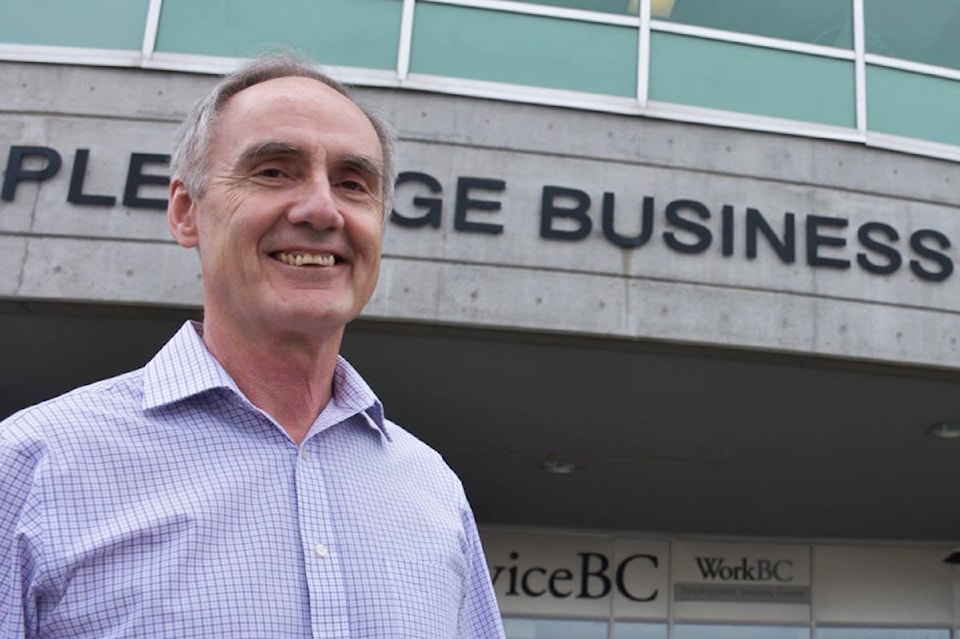Recently there was an article written by reporter Neil Corbett, covering a social entrepreneur concept that past Maple Ridge councillor, Bob Masse has initiated to generate an on-going funding source for the Youth Wellness Centre.
Now called Foundry, the centre serves youth of our community in the area of mental health and addiction services.
Foundry, although funded by the government, requires additional funding in order to provide the level of services our community requires, which is the case in almost every area of health care and it is only going to get worse.
RELATED: Initiative provides mental health for younger kids.
Masse’s concept is that he will front-load establishing a physio and massage therapy clinic in an unused portion of a large local gym with the agreement that the space, which was previously generating no income for the building owner, would be leased out at below market rates to allow new practitioners to get established and provide them with the leverage to re-direct a portion of their earnings to Foundry.
Masse, as a health practitioner himself, is aware of the rising health needs and the associated costs and he invested a good portion of his time on council advocating for more progressive approaches to providing health care and models of funding.
Therefore, it is no wonder that he has taken the lead on a project that provides a solution to the ever-burgeoning health budget; something that we, as a society, would be wise to look for more of, as we will not be able to pay our health costs solely through taxes.
In March of 2017, the auditor general for B.C., Carol Bellringer, delivered a report called Health Funding Explained 2.
It was the second installment of a report, the first one having been done in 2013, that was intended to provide “easier viewing and increased understanding” of health spending.
It is an excellent report that is an eye-opener regarding the increasing costs associated with the health sector, which presently takes up 41 per cent of the total provincial budget.
The report states: “Rising health care costs may threaten the provincial government’s ability to provide services and meet financial commitments both now and in the future. This is something we noticed two years ago in our report on monitoring British Columbia’s fiscal sustainability. Between 2013 and 2018, health care expenses are projected to increase by $2.7 billion. This is more than the combined budgets of the 11 smallest ministries or even the budget of the third largest ministry, education.”
One of the reasons for the increasing costs that are cited in the report is the rising number of seniors. The percentage of the B.C. population over the age of 65 has grown from nine per cent in 1971 to 16 per cent in 2013, and it is forecasted to grow to 25 per cent by the year 2041.
Challenges of an aging population are not limited to just the increased cost associated with health care, as challenges also come with decreased economic productivity, due to a lower youth population that will struggle to provide the necessary tax base, so we need to come up with other solutions.
Since the AG report, there has been a change of government and it has pledged to increase health care spending, which, quite frankly, is like pledging to breathe.
The previous government, which the present one accuses of having underfunded health care, had projected similar budget increases that are presently being proposed and kept pace with most other provincial per-person funding levels.
B.C. was at $4,050 per person at the time of the AG report and the Canadian average was $4,095. I would be surprised if this government manages to do much better, based on our ability to pay and the growing demand.
However, getting past the rhetoric of who did or didn’t fund health care, it would be more interesting to know from both the government and the opposition if either has a plan outside of our pockets to find alternative solutions to addressing health care needs and the associated costs?
In the example of Masse’s social entrepreneurial venture, it was apparent, at least at the local government level, that government is wary of such ventures. He faced regulatory barriers at city hall that would have turned a less seasoned business and entrepreneurial spirit away.
However, Masse persevered and eventually city staff started to work with him and assisted in taking down some of the barriers while still retaining the integrity of a proper level of oversight. If this can be done at the local level, it is hopeful that the provincial and federal levels would be able to embrace this type of social entrepreneurship.
According to an article on the World Health Organization site, social entrepreneurs can play a big part in a health system ripe for change. Within the article it cites David Bornstein, who wrote: “How to change the world – social entrepreneurs and the power of new ideas,” who says, “What business entrepreneurs are to the economy, social entrepreneurs are to social change. They are the driven, creative individuals who question the status quo, exploit new opportunities, refuse to give up — and remake the world for the better.”
I think Masse falls into this category and through his experience he offers excellent advice to the government – lead, follow, or get out of the way.
Our local government got out of the way and now Foundry stands to gain a monthly dividend of $2,000, a local business person has income he did not have before and new health practitioners are being assisted to get established and are already giving back to the community.
Sounds exactly like the type of fiscal sustainability the AG is looking for, as should the government.
Cheryl Ashlie is a former Maple Ridge school trustee, city councillor, constituency assistant and citizen of the year, and currently
president of ARMS.
